hackberry tree leaves bumps
Hackberry leaves measure 2 to 5 5 12 cm long and up to 35 9 cm wide. The leaves on my hackberry tree have bumps.
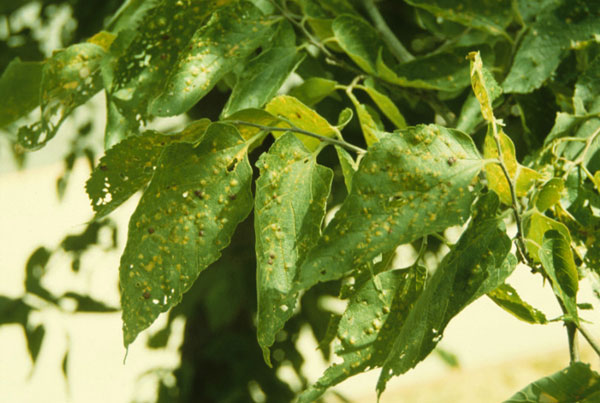
What S Wrong With My Plant Garden University Of Minnesota Extension
The bumps are called galls.

. Bark of young trees appears covered with bumpy warts but the pattern changes to cork-like ridges as trees mature. The trees have strong tap roots and many shallow spreading roots. It has been a good year for funky leaf galls or a bad year I guess depending on how you look at it.
Hackberry leaves have teeth and taper towards the tip. The galls are typically cosmetic in nature they arent hurting your tree. Straight short 1-2 feet in diameter.
Hackberry leaf galls are raised warts on leaves that are caused by small aphid-like insects that live within the growth. Leaves on hackberry trees are simple leaves that are arranged alternately on crooked branches. Elms often get galls such as the cockscomb gall caused by an aphid.
Large numbers may be present in September and October and they may be active in mid-winter on warm. Or wilting soon after leaves emerge in spring. Bird cherry prunus padus victorian botanical illustration 1863.
These bumps and deformities are generally the result of feeding insects or some other foreign organism such as bacteria fungi mites nematodes and even viruses. An alternative name is hackberry gall-maker They are most commonly noticed however as a household nuisance in late summer and fall. Up close the galls really do look like baby-bottle nipples that have fallen to the ground and been covered with tiny hairs.
Raised cushion-like bumps on affected branches may be cream to orange or red turn black with age. This insect does not appear to affect tree health. Branches few large often 20-30 feet above ground.
Hackberry psyllids are small aphid-like insects that cause the galls commonly seen on the underside of hackberry tree leaves. Sunken dark brown area on branch that is often cracked or has a ridge at the edge. Galls are odd greenish shapes that grow on plants.
Hackberry can sometimes be a gnarly shrub. Usually not a problem since it dries on the tree and is eaten by birds. The wart-like growths on the hackberry leaves are galls.
The tiny winged bugs are probably hackberry lace bugs. Hackberries are great native trees that are tolerant of many temperature soil condition. What can I do about this problem.
Hackberry leaves have teeth and taper towards the tip. Galls are abnormal vegetable growths caused by various agents such as insects nematodes fungi bacteria viruses chemicals and or mechanical injury. The gall itself is the plants response to the irritation.
1 Whatever the original cause these organisms are usually not still on the leaf. 2 12- to 4-inch dark green leaves. Slightly pyramidal when younger.
They are caused by insects - the bump itself is basically scar tissue. They are often covered with bumps called Nipple Galls. You have ever seen the bumps on the underside of hackberry leaves you know what these galls look like.
Hackberry leaves measure 2 to 5 5 12 cm long and up to 35 9 cm wide. The bark is mostly smooth and. The gall found on the hackberry leaves is referred to as the hackberry nipple gall.
Youll notice an asymmetric base on the dull to glossy green leaves. Galls are odd greenish shapes that grow on plants. Reticulate also known as netleaf hackberry or western hackberry.
Up close the bumps look like hairy nipples. Though these galls are unsightly the health of the tree is apparently unaffected. Hackberry leaves have a recognizable ovate-lanceolate shape with serration along the entire margins.
Hackberry nipple gall maker Pachypsylla celtidismamma is an insect pest of hackberry trees creating bumps on the underside of the leaves also known as galls. This irregular gall looks like roosters combs on the leaves. Inconspicuous flowers bloom in spring with emerging leaves.
They are often covered with bumps called Nipple Galls. Crown rounded somewhat open. Hackberry bumps on a log - hackberry tree stock pictures royalty-free photos images.
Full sun to partial sun. Slightly pyramidal when younger. Spraying the trees with an insecticide when the leaves are unfurling in the spring will eliminate some of the adults and nymphs before the galls have formed.
40-60h nearly equal in spread. Nipple galls are common ailments of various trees in the landscape and can be caused by a few different insects. Lace bugs are sap feeding insects commonly found on the leaves of shade and ornamental trees in Iowa.
Leaves of hackberry trees often have the hackberry nipple gall caused by an insect called a psyllid. Dead branches and twigs often first observed in early spring when no leaves form. They are quite common on trees.
Aged bark has ridges and bumps like dried mud globs. Adult lace bugs have attractive wings that are beautifully sculptured with an intricate pattern of veins resembling lace hence the common. Produces black-purple pea-sized berries that ripen in the fall.
Here is a little more information on galls youll find on Hackberries and general information. Heavily infested leaves may turn yellow and drop prematurely. The hackberry is an exceptionally hardy tree in fact experts have referred to it as one tough tree The hackberry can be grown in various soils and locations and they can thrive under a wide range of temperatures and conditions including regions that see upwards of 50 inches of rainfall each year although the tree itself actually doesnt require a lot of water.
Leaves are medium to light green above and paler below turning light yellow in the fall with prominent veins beneath. Heavily infested leaves may turn yellow and drop prematurely. Roots of chinese hackberry tree - hackberry tree stock pictures royalty-free photos images.
The gall is induced to form by a gnat-like psyllid. A deciduous tree showing summer leaves and b - hackberry tree stock illustrations. Trees most commonly affected are hackberry sycamore and oak.
Five species are trees and one species is shrublike. When our clients ask about these funny bumps on their tree leaves I usually stop at the short explanation that. 13 to 12 inch berry-like fruit called drupes that change from green to purple or reddish-brown in autumn.
Mature size and shape. The trees have strong tap roots and many shallow spreading roots. This specific gall is caused by a psyllid on hackberry trees.
Galls are abnormal growths of plant tissue induced to form by mites insects or other small organisms. Fall color is yellow. Hackberry species occour throughout texas.
The two species most common across the state are Celtis Laevigata also called sugarberry or sugar hackberry and C. Alternate simple 2 to 4 long and 15 to 2 wide ovate long-pointed with the base of the leaf lopsided and sharp teeth along the margin. I know they can be unsightly but theyre pretty normal occurance.
They are often covered with bumps called Nipple Galls. Your tree has galls. Bark on old trees thick light grayish-brown deeply furrowed ridged or with wart-like protuberances.
Branchlets many slender somewhat horizontal. Up close the bumps look like hairy nipples. They are often covered with bumps called Nipple Galls.
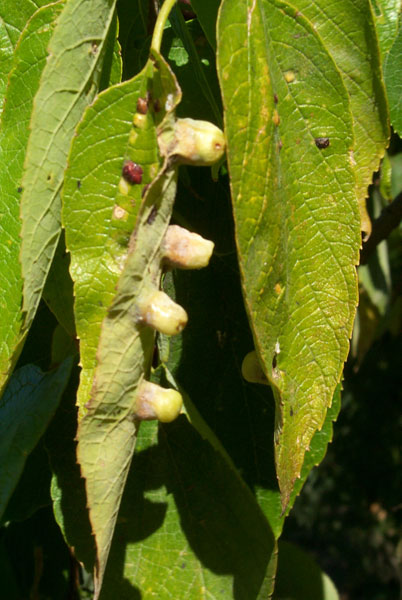
What S Wrong With My Plant Garden University Of Minnesota Extension
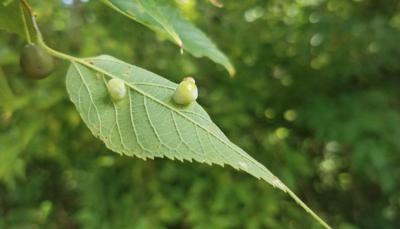
In The Garden Fresh Perspective On Hackberry Nipple Gall Living News Gazette Com
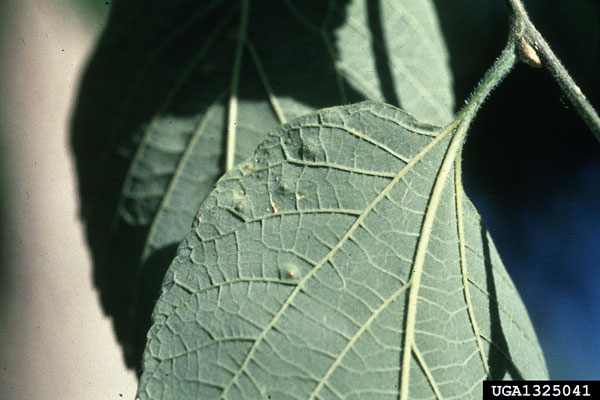
What S Wrong With My Plant Garden University Of Minnesota Extension

What S Wrong With My Plant Garden University Of Minnesota Extension

What S The Deal With Those Weird Bumps On Tree Leaves Open Spaces Trib Com

My Leaves Have These Weird Bumps And Lumps On Them Arborsmith Ltd Crafstman In The Care Of Trees

Common Hackberry Plants Texas Native Garden

Hackberry Nipple Galls Deform Tree Leaves Siouxland Homes Siouxcityjournal Com
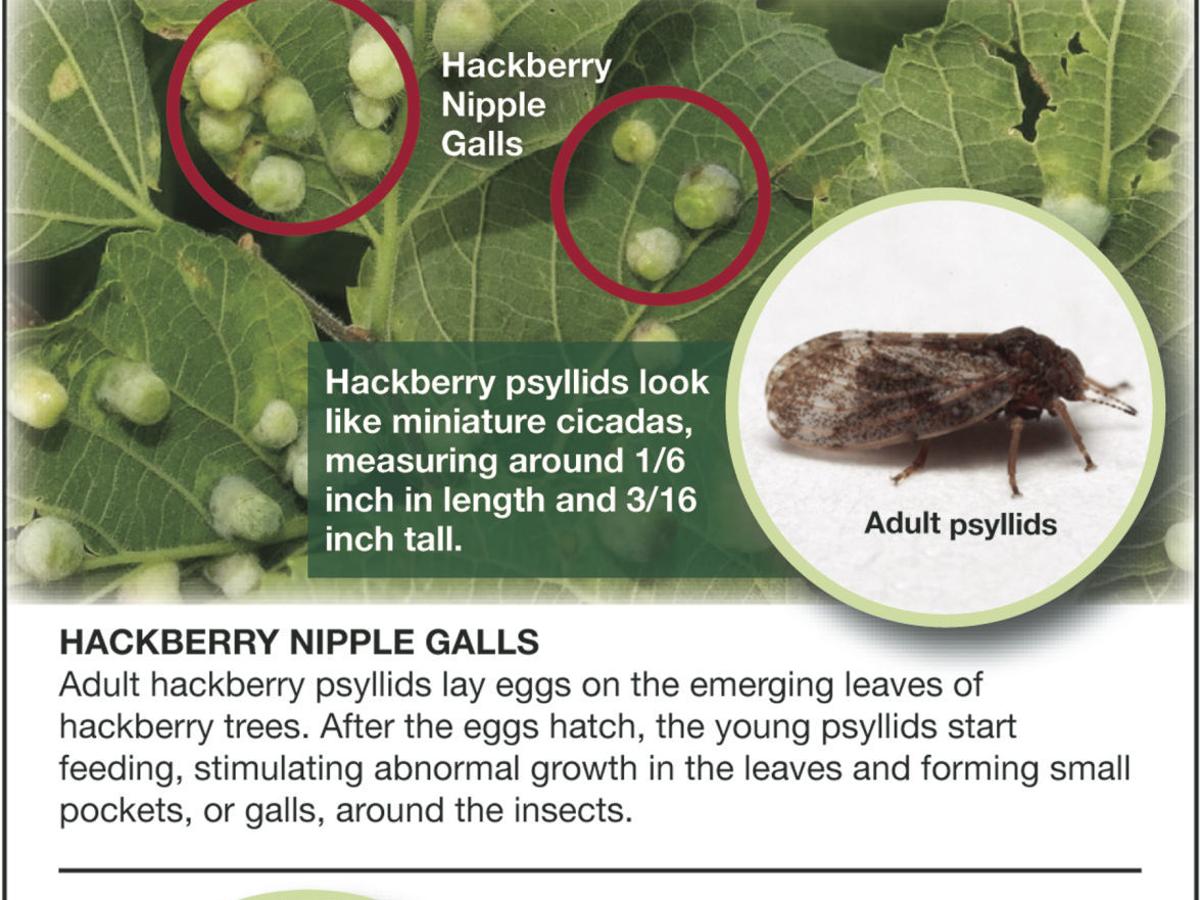
Hackberry Nipple Galls Deform Tree Leaves Siouxland Homes Siouxcityjournal Com